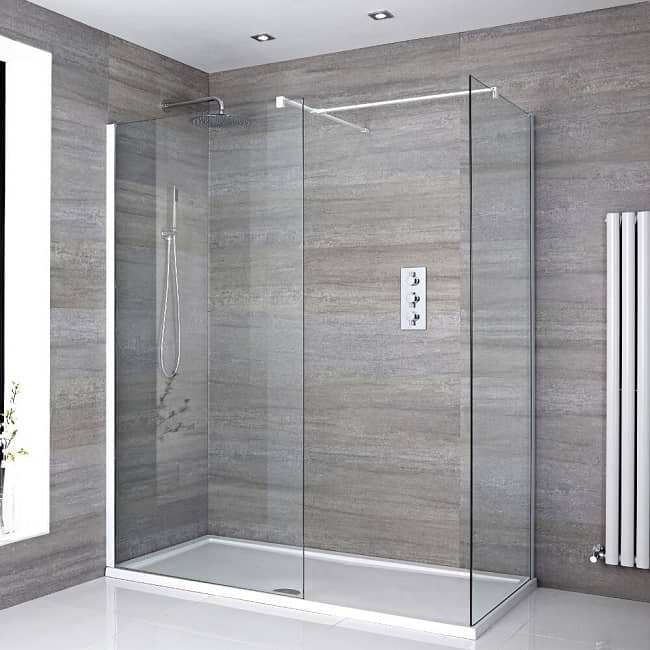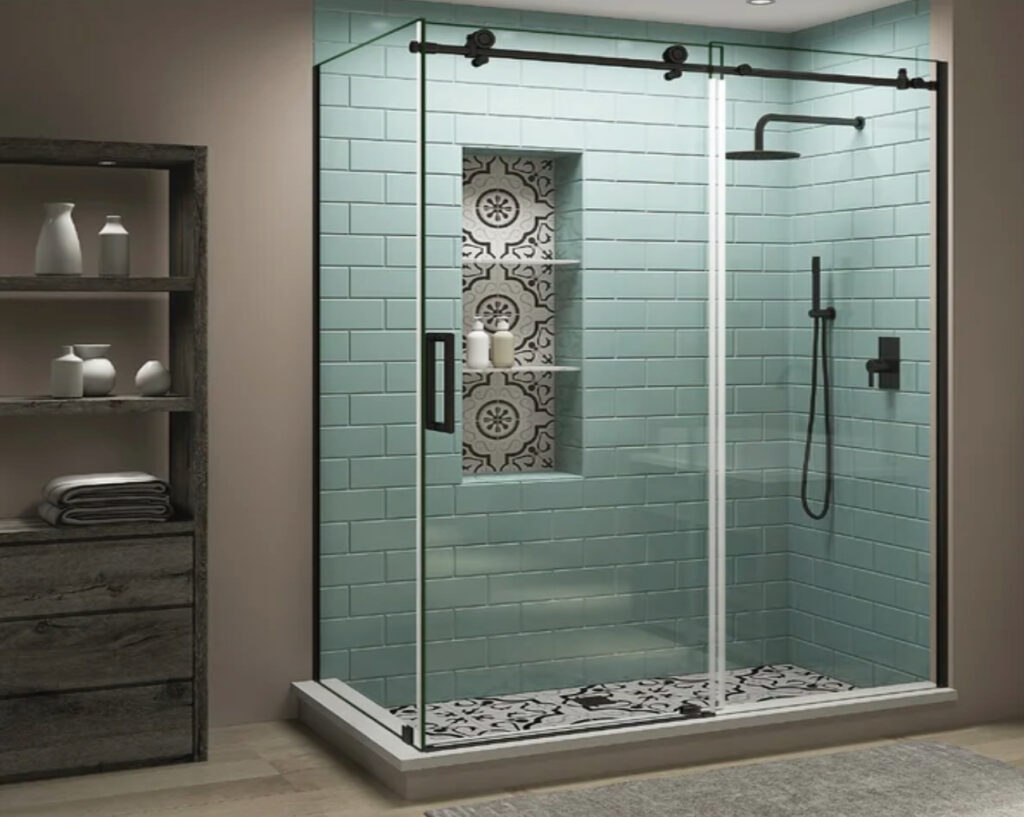Are you looking for tips on Simple ways to Install a Shower Cubicle on Your Own?

A successful shower setup requires careful preparation as well as a lot of work. In most cases, you will certainly need to do 3 sorts of tasks: framing wall surfaces, installing the plumbing, and ending up wall surfaces.
Prep work
Firstly, you should decide on the kind of shower that you want to set up. It is important to determine whether the selected shower can dealing with specific systems as well as can manage a secure level of water through the boiler. A lot of shower systems nowadays are developed to be adaptable to various water pressures (such as kept warm water and chilly keys).
It is likewise crucial to take into consideration the water pressure as well as the planning of the piping as well as water drainage for the shower
Different Sorts Of Shower Units
- Push-on Mixer: The hose and spray parts of the push-on mixer shower unit can be connected to the bath tap as per your requirement, and also the water temperature level can be readjusted by means of the faucets. Push-on mixers are cheap as well as incredibly easy to set up. Nonetheless, although the hose link is simple, it is quickly dislodged. In addition, it is troublesome to readjust the temperature.
- Bath/Shower Mixer: The tube and spray of this kind of shower are combined with a bathroom mixer faucet, and also the temperature can be readjusted with the bath faucets. It is a very inexpensive alternative as well as no extra plumbing is included. Nonetheless, the bath/shower mixers additionally deal with bothersome temperature level control choices.
- Manual Mixer: The hose and also spray of a hands-on mixer shower unit belong of the wall surface unit as well as the hot and cold water products are linked to a single shutoff The temperature and also pressure of the water are regulated through either one or a selection of knobs (in extra costly showers). Although temperature level control is much easier in hand-operated mixer types, they are a lot more pricey than the previously stated mixers. They also need added plumbing of hot and cold water system pipes.
- Thermostatic Mixer: The hose as well as spray of this shower type belong of the wall system and also the hot and cold water materials are linked to a single valve here as well. It is full with a built-in stabiliser to self-adjust the water temperature level and to stop it from becoming too hot. One of the largest benefits of a thermostatic mixer shower kind includes hassle-free temperature control. Nevertheless, it is the most expensive of the different mixer choices.
- Power Shower: A power shower is a solitary unit including a powerful electrical pump that can modifying both the water stress and also temperature level. This type of shower can be fitted if there is supply of water from a cold water tank as well as a hot water cylinder. A power shower makes the adjustment of both pressure and temperature level very easy. On the other hand, it is unsuitable for water heated up straight by the shower or where the water is supplied by a mix boiler under keys stress.
- Electric Shower: An electric shower is plumbed right into a keys cold water supply and it heats up the water electrically. It is essential to keep in mind that for this shower kind to be installed, the mains pressure requires to be at the very least 0.7 kg/sq cm (10lb/sq in). The device enables the temperature level and pressure to be readjusted by means of a knob. Versions with temperature stabilisers are much better as they remain untouched by other faucets elsewhere in operation within the home. A significant disadvantage of electric showers is that the control knob only allows for the option of heats at less stress, or lower temperature levels at a higher stress. This is troublesome in the winter season when the spray is usually weak and also the mains water is colder. Nevertheless, this issue is taken on in some models which are available with a winter/summer setting.
Technique
Relying on the sort of shower you desire to install, the shower head must either be fitted in order to avoid its contact with the water in the bath below or the base tray, or it must have a check shutoff.
Prior to beginning, it is suggested to note the settings of the shower head as well as control, and to plan the pipe-work involved. In addition, the water drainage system to get rid of the waste water will require to be intended. Both placements of the cord path and the shower button will likewise require to be thought about if an instantaneous or electrical shower unit is being mounted.
Make use of the instruction guide supplied with the shower unit to fit the shower control.Before fitting the pipelines that will provide the water to the shower system, it is very important to remove the supply of water. In order to shield the pipes, they should be provided a water-proof covering as well as additionally fitted with separating shutoffs. The pipelines can then be hidden right into the wall and also glued over to neaten the general look.
Fit the base tray, shower head, and fittings.
Connect the major shower control to the pipelines that will certainly be providing the water (This might need a female screw thread adapter).
Reconnect the supply of water and examination the pipelines for any type of leaks, as some might require tightening.
If you are mounting an electric shower, remember to turn off the power supply before making any electrical connections. When these links have been made (there need to be support within the instruction manual), the power supply can be changed back on.
Readjusting Water Stress to Match Your Shower
The cold water storage tank can be raised to a greater height (in some cases just 150mm (6inches)) by fitting a solid wood support below it - potentially made up of struts and blockboards. If you select this choice, the primary and circulation pipelines will certainly likewise have to be raised to meet the brand-new elevation of the tank.
Additionally, a booster pump (a single pump or a dual/twin pump) can be fitted. Whichever kind is picked, it should be connected right into the power supply in order to operate.
Piping and Water drainage
It is best to utilize 15mm size supply pipelines, and make the go to the shower as short and also straight as possible so regarding preserve optimal pressure and reduce warm loss. Additionally, by reducing using elbows for pipe edges, you can lower the resistance in the flow of the water. You can attain this by bending the pipes rather.
Most Common Errors
- Violating or ignoring neighborhood code restrictions.
- Using pipelines that are also tiny.
- Attaching copper to galvanized without utilizing a brass or dielectric fitting in between both.
- Not utilizing tape or pipe compound at threaded joints.
- Uneven your components when mounting them.
- Not mounting an air void loading for components.
- Cutting supply stub outs too short to set up the shutoff valves onto after the ended up wall remains in area.
- Not correctly lining up tubes right into installations or quit shutoffs. (Requiring the nut onto the compression ring at an angle when the tubing goes to an angle will certainly create a leak.).
- When transforming the water back on in your house, always run the outdoors hose valve or flush your toilets to bleed dust and also air from the lines. This particles can trigger problems in your sink faucets as well as other plumbing trim.
How Do You Install a Shower? Follow This Guide
Installing a Shower at a Glance
- Tools & Materials: Level, electric drill, caulk, hole saw, cedar shims, shower unit
- Step 1: Drill pilot holes
- Step 2: Prep fixture holes
- Step 3: Move unit into place
- Step 4: Caulk corners and base
- Step 5: Attach door
- Step 6: Install shower pan
Whenever plumbing is involved in a DIY project, people worry about what might go wrong. The truth is that installing a shower isn’t that complicated, and you can save a lot of money by doing it yourself. You shouldn’t need to make any alterations to your plumbing to complete the job, and most of the tools you need will be provided in your new shower kit.
Can I Install a Shower Myself?
Even if you’ve never installed a shower before, you’ll find this to be a project that is perfectly suited for DIYers with a moderate level of experience. Whether you're doing a bathtub conversion or installing a new stall, most of what you need comes in shower kits that you can purchase from a hardware store. The first thing you need to do is determine what type of shower stall you want.
Single-panel stalls are the easiest to install because they come preassembled. All you need to do is put them in place. Multi-panel showers require a few additional steps, but you’ve got more control over the appearance of your unit. Multi-panel units are also much easier to handle if you’re going to do the installation without any help.
Be sure to take all appropriate safety precautions, such as wearing eye protection and gloves. When you’re removing or installing a shower unit, you might kick up debris that could hurt your eyes. You’ll also need to work with equipment that will get extremely hot, so be sure to have safety gloves handy.
Tools and Materials
- 2- to 4-foot level
- Electric drill with a 1/8-inch drill bit
- Caulk
- 2-inch hole saw
- Cedar shims
- The unit itself
Before You Begin: Prep the Space
It’s highly important to measure your space accurately before putting the stall in. Measuring from the floor upward and from each corner outward will ensure you’ve got the right measurements. What you’re looking for is where the plumbing apparatuses are going to come through the stall. Transfer these measurements over to the back of your unit by drawing the locations of these holes using a pencil or marker.
Pull out your old shower and make sure to scrape off all the old caulking. Be thorough because you want to work with smooth surfaces for the best installation. Once you’ve pulled out your existing shower, you need to make sure that the floor is clean and dry. The best way to clean debris is with a shop vacuum, as it’ll soak up water and dirt together.
If you’re experiencing any plumbing issues, such as low water pressure, this is a perfect opportunity to solve them. Make sure that the pipes themselves are not in need of patching and clean your showerhead. When you turn the water back on after your project, check the pipes for signs of wear or disrepair. Anything beyond minor repairs should be handled by a plumber, and this is the best time to bring in a professional.
If the floor has any moisture at all, don’t proceed until it’s completely dry. The last thing you need is for the floor to rot or invite mold and mildew into your base. Once everything is dry, apply waterproof wallboard to the walls. This can be attached with screws or nails, then sealed with caulk so that water doesn’t seep into any crevices.

We are very excited about How to Install a Shower Enclosure and I'm hoping you enjoyed the post. Liked our content? Please share it. Help others find it. Thanks for going through it.
Pro help? Call now!
Comments on “Installing a Brand New Shower Unit: Pro Tips for Homeowners”